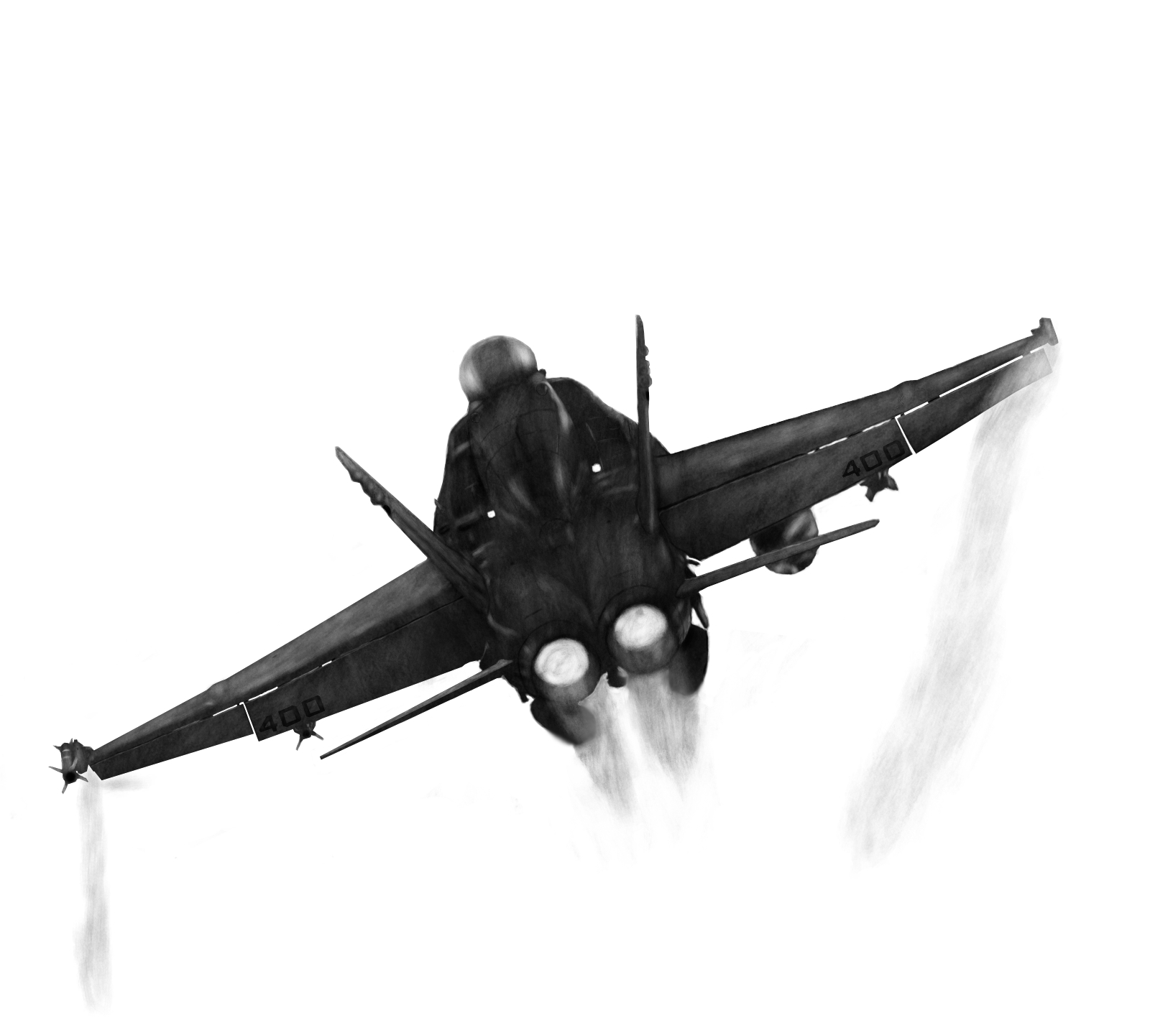-
Posts
606 -
Joined
-
Last visited
About NeedzWD40
- Birthday 05/09/1986
Personal Information
-
Flight Simulators
DCS, IL-2 1946, IL-2 BoX, ArmA2, ArmA3
-
Location
In your squeaky joints
-
Interests
Getting into your squeaky joints
Recent Profile Visitors
The recent visitors block is disabled and is not being shown to other users.
-
Right now it only works if a FARP is inserted in the editor prior, linking it to the mission warehouse file. In theory you could have a list of FARPs already defined and recreate those as required in order to link to the warehouse, but the "pad" will still be present on the map. All depends on the workarounds desired (and whether my speculations are accurate).
-

Being detected at night and behind cover. the screenshots says it all.
NeedzWD40 replied to AirSenpai's topic in DCS: AH-64D
Well yes, but actually no, yet actually it depends. An F-5? Probably not. MiG-29? Maybe. MiG-31? High probability. It also depends on the rotor blades being made from traditional reflective materials, which is pretty common in a lot of helicopters for durability/longevity reasons, but ~20 years ago there was an upgrade program for the AH-64's blades that shifted to an even more composite construction compared to the past. I don't have all the details, but suffice to say that the radar reflecting material has been grossly reduced and that it's not a solid assumption that a radar will easily pick up an AH-64 based upon the blade returns alone. This dates back even further to the AH-1's K747 blades, where radar signature reduction was a design goal. Older types with traditional metal blades, ie UH-1H, Mi-8, Mi-24, are where the effect really comes into play, provided the radar is a modern-ish set. -

Being detected at night and behind cover. the screenshots says it all.
NeedzWD40 replied to AirSenpai's topic in DCS: AH-64D
They don't even need radar to see you. Assume that everything AI knows about you at all times and plan appropriately. At least in the case of jets, they come in low and slow, so it's very easy to ambush them with ADA or friendly fighters. Alternatively, someone with a Gazelle and Mistral might be up for helo escort. Sucks, but that's what we have to work with right now. -
We actually can already do this, just that it's inflexible in the units that we can use to make a valid FARP as well as define any limitations of ordnance from the FARP itself (they have unlimited munitions). If we could adjust created FARP munitions and fuel, plus define resource providers, we could be well on our way to having even more flexibility.
-
So the first thing is that the unit you have set to use 30 is on AM, not FM; the second is that you have that JTAC unit with FAC assignments which override the transmission command. However, I did find that the hot start slots seem to have an overlap with the FM radio frequencies by default -- unless FM2 is used exclusively. When I modified the default starting frequencies, the problem went away. So there's a bit of column A, bit of column B going on here. The cold start spots worked as advertised with no issues (once the JTAC broadcast was corrected). My interim advice would be to modify the starting default frequencies for the FM radios on the hot start spots (they use preset 3 and 4 by default) with at least 0.1MHz of separation between frequencies, as the defaults of .005 are insufficient to stop interference. I'm attaching a mission with all the radio systems tuned to receive custom transmissions, which should help guide you, whether using a scripted transmission, trigger zone, or unit transmission. Also, keep in mind FM is very prone to interference and LOS issues, so the transmission can be spotty without a very clear LOS. AH-64D Radio Test.miz
-
My experience hasn't changed much; that is, if a bandit turns and runs, it won't catch them, and if they're very vicious in maneuvering they can potentially bleed it out of juice if they're in denser air. On the other hand, if they stay above 20,000ft and keep flying toward the missile (even if maneuvering), they tend to get caught by it regardless. Depending on the threat, I'm engaging from 30-40nmi if they're >30,000ft, trimming that down if they're closer to the deck. I'm mostly doing RWS + STT due to TWS being generally unreliable against fighter targets unless they're really spaced out and the airspace isn't cluttered. If a target is on the deck, then even a high-speed, high-alt launch will result in a pretty slow missile down low, so in those instances I'm holding my shots til ~20nmi if at all possible. A shot I made this evening on a transport on the deck from 50nmi had the missile impact at 450KTAS, so anything that can turn around quickly on the deck is going to outrun it. On the other hand, there was a Flanker that went co-alt at 35,000ft and he couldn't dodge a shot from 35nmi. It's pretty variable depending on the situation and I wouldn't really take long shots unless I knew the target was going to be cooperative or I was trying to get them to do something else. YMMV of course, but 1000lb brick is 1000lb brick.
-

General Enquiry - Control Measures in Apache POINT System
NeedzWD40 replied to JabbyJabara's topic in DCS: AH-64D
Check out @FalcoGer's CoordinateConverter: -
I took a look at your mission and I think it's a weird area where the trigger related radio chatter isn't matching with how it should work. Basically, it appears that both the FM radios are getting overlap on the frequency set (30FM), even if you manually tune one far away from the other. However, this only applies if you're using the trigger with radio transmission attached to zone; when used with a unit transmission, it works as advertised (with a narrow band where you can get some overlap, ie ~0.05MHz separation). If you tune both FM radios to the 30FM frequency, the issue seems to go away. It also goes away if a unit transmission is used in place of zone trigger.
-
I'm hoping that rocket zones and additional warheads will be added when the bomb fusing system is implemented, as I'd figure rocket zones would piggy back off of that. I'd also really like to see M264s added as I don't think they were ever addressed despite being a valid warhead (the M156 is a little bit more iffy, though ballistically identical to the M151).
-
This comes up now and again for me; George will occasionally turn off the weapons under the WPN>UTIL page after a repair/shutdown. Check the WPN>UTIL page and make sure the weapons have solid circles.
-

Rudder always totally to the left.
NeedzWD40 replied to FirstDawn's topic in Controller Questions and Bugs
Double check your axis bindings and make absolutely sure no other device is bound to the pedals. -
If you can see them with your eyes, then TADS should be the sight used to engage. If you have an idea of where they might be, with no current LOS, narrow the FCR's scan azimuth and scan specifically in that direction. Use the widest azimuth for a more general awareness scan, not for "eye of sauron" type tracking and targeting. As answered, 8km is only for moving targets and it can do so fairly well, but stationary are a lot harder and limited to 6km. If you have a suspicion that hostiles are present in a particular area and neither TADS nor FCR are able to pick anything up, then it's generally better to move and look from a different angle.
-
Ka-50 uses a different system that only works with other Ka-50s. Further, the 1113 code for FC3 aircraft no longer guides weapons like Kh-25ML, though the aircraft gunsight/HUD will still indicate laser position.
- 6 replies
-
- budy lasing
- laser code
-
(and 4 more)
Tagged with:
-
Has the FCR detected valid targets?
-
@Amarok_73 has done a good job of explaining the why, but I'll try and answer as well. The PRIMARY box under the PRESET EDIT menu is only an indication as to what the primary radio is for that preset. It simply highlights the radio, frequency, settings, plus puts an arrow next to it. It's for a quick at-a-glance overview of the preset for awareness/coordination. Suffice to say that it's entirely contextual in how/why this functionality is used, and normally in much busier commo environments than we simulate in DCS. In here, I've edited my first preset to be called A-CHAN and the callsign to be ACH. In addition, I've replaced all the frequencies with custom ones. The PRIMARY is still VHF for that preset, thus VHF is highlighted and arrowed. However, I've gone through the top row for each radio and tuned them to the frequency in the preset, which is indicated under the left side with V U 1 2 H. This all means that right now, all my radios are tuned to the first preset as indicated. Unless I tune the radios differently (EUFD, COM preset, COM manual setting), they'll stay on that frequency until changed -- there's no deleting of a radio from a preset. This is entirely an organizational thing: Instead of PRESET 1 I might instead call it BDE HQ, whereupon the frequencies preset are all the available frequencies that brigade headquarters is on, but the primary might be the VHF radio. I might have PRESET 2 as my inter-flight frequencies, where FM1 is the primary radio used, and so on. The idea is that instead of punching in numbers to tune radios each time, you simply select a preset for a known party (ie JTAC), select their primary radio, then select the appropriate mode. This applies whether you're speaking of datalinks or commo. The PRIMARY just makes a fancy highlight so you don't end up calling Juan's Taco Joint for a fire mission because you selected FM2 instead of FM1. The second half is the EUFD, where the DL rocker comes into play. All five radios can be used for the datalink and each crewmember can independently select a radio for the datalink. Your crewstation is an open box indicator, while the other crewstation is a diamond. For example, the pilot can use the VHF radio to send a datalink message to brigade, while the gunner can use FM1 to send a datalink target to nearby flight members. TL;DR: Presets are just a way to tune radios for both commo and datalink. Select your preset, select your radio, select mode at the bottom, and voila: radio tuned to that frequency. Use EUFD DL rocker to select radio for datalink, RTS to select for commo.






